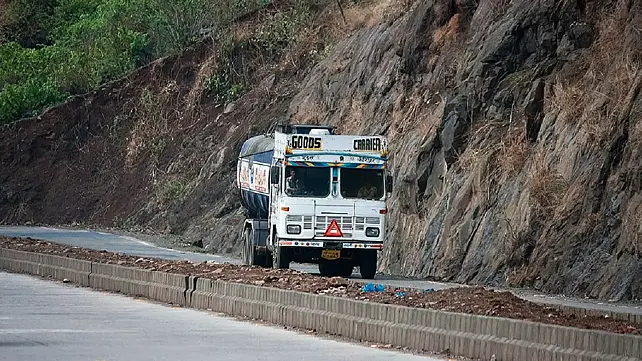
The Indian commercial vehicle industry registered a healthy growth of 39% in the second quarter of this fiscal. This was thanks to replacement demand, improvement in the macroeconomic environment and healthy traction in supporting industries such as steel, cement, automobiles and e-commerce. Moreover, freight rates have held up, which, coupled with healthy freight availability, is supporting fleet operator viability.
The positive growth trends, continues ICRA, were broadbased across the three sub-segments: medium & heavy commercial vehicles (M&HCVs), light commercial vehicles (LCVs) and buses with each of these reporting healthy double-digit growth in wholesale despatches in Q2 as well as H1 FY 23.
Although headwinds such as the evolving geopolitical situation, elevated fuel prices and increasing interest remain, they are not expected to be a major dampener to domestic CV sales, said Kinjal Shah, Vice President & Co-Group Head, Corporate Ratings, ICRA.
'Deferral of purchases over the past two to three years due to a multitude of factors such as revision in the axle-load norms, macroeconomic slowdown, spread of the pandemic, etc. had resulted in significant ageing of the existing fleet on the road.The average age of M&HCVs and LCVs in FY2022 was approximately 10 years and 5.5 years respectively at historic highs. Accordingly, replacement demand would play a key role in spurring sales over the near to medium term,' she added.
M&HCV Segment
The M&HCV segment saw healthy improvement in volumes post the pandemic, reporting 39.2% YoY growth in Q2 and 75.4% in H1 FY '23. ICRA expects the segment’s volumes to grow at 15-20% this fiscal supported by replacement demand as well as demand from the steel, cement and mining industries due to pick-up in economic activity and infrastructure spending. Quarterly volumes for the segment have surpassed pre-Covid levels but still some distance away from the industry highs seen in FY '19.
The growth drivers for the LCV segment remain largely favourable, especially due to the increased requirement for last-mile transportation from the e-commerce segment, while demand from the agricultural and allied sectors would remain dependent on the stability of rural cash flows. Further, the availability of bank finance augurs well for the segment. Accordingly, ICRA expects the segment volumes to grow by 13-15% to 519,800 units in FY2023, thus inching closer to the industry highs witnessed in FY2019.
As for the bus segment, volumes have gained significant traction with the reopening of schools and educational institutions. The quarterly volumes reported in both Q1 and Q2 of this fiscal at 18,000-19,000 units have finally reverted to pre-Covid levels, although much lower than the industry highs of FY '19.
The growth drivers for the segment remain favourable, supported by the stabilisation of pandemic-induced challenges and the reopening of educational institutes and offices. ICRA expects the growth in the segment to be supported by the low base and report near-doubling of volumes in the current fiscal.
With regards to the overall financing environment for CVs, Sruthi Thomas, Assistant Vice President & Sector Head, Corporate Ratings, ICRA added, “Disbursements have gained traction over recent quarters and delinquencies have stabilised following normalisation of economic activity and pass-through of increased fuel prices, resulting in improvement in profitability of fleet operators. The ongoing festive season is expected to augur well for the industry in terms of disbursements. However, the borrowers’ ability to pass through the fuel cost and interest cost escalations adequately would remain critical for their profitability.”
ICRA expects an improvement in the financial performance of the CV original equipment manufacturers (OEMs) over the near term, led by benefit of operating leverage and the easing commodity prices; accordingly, aggregate operating profit margins of CV OEMs are expected to revive to 4-6% in FY2023.
This, in turn, will support the gradual improvement in their credit metrics as well. In terms of the investment outlay, while CV makers have limited plans for capacity expansion over the near term, investments in new product development, electric and other alternative fuel vehicles, and tightening emission norms etc will continue.
Also Read